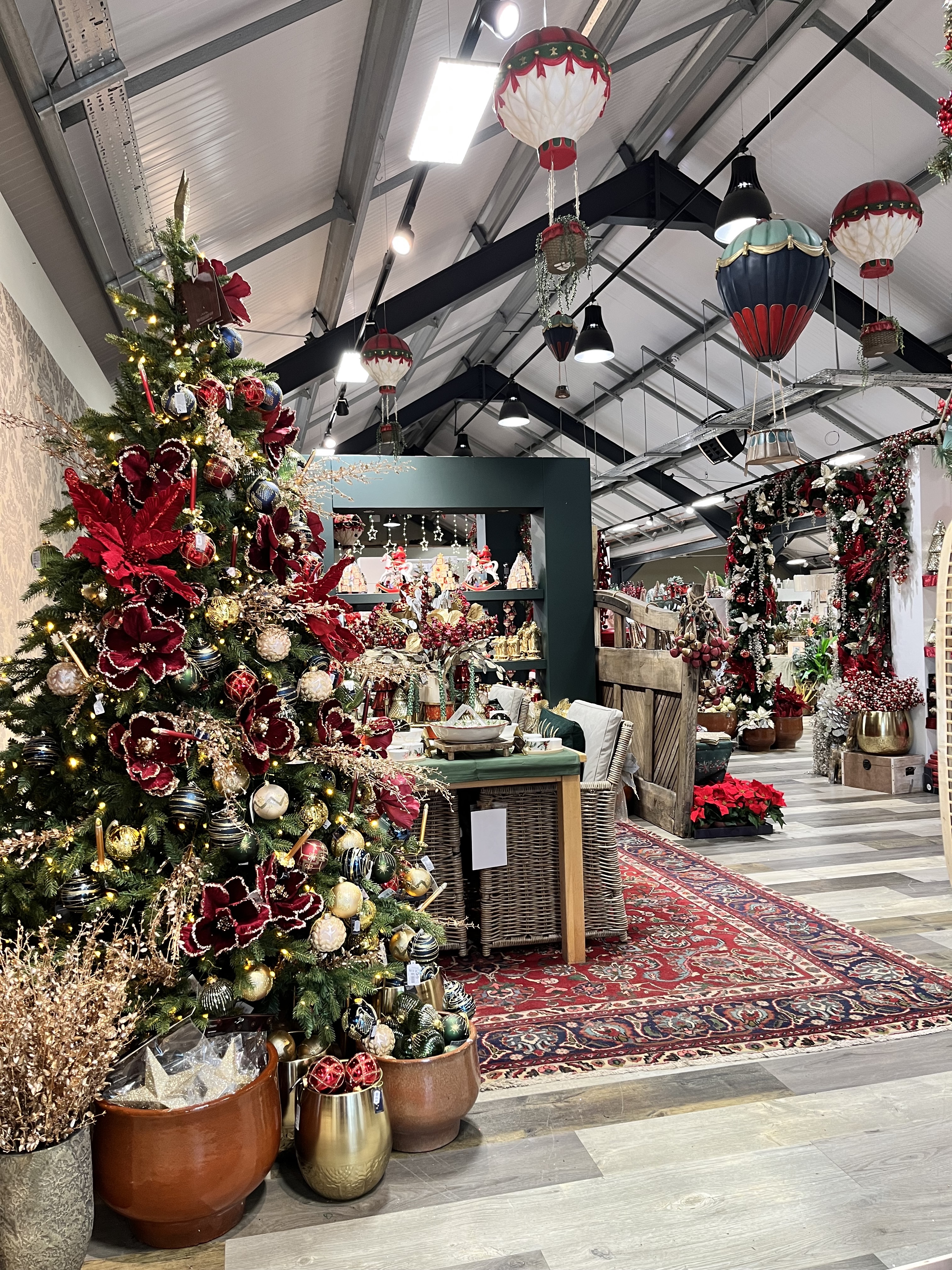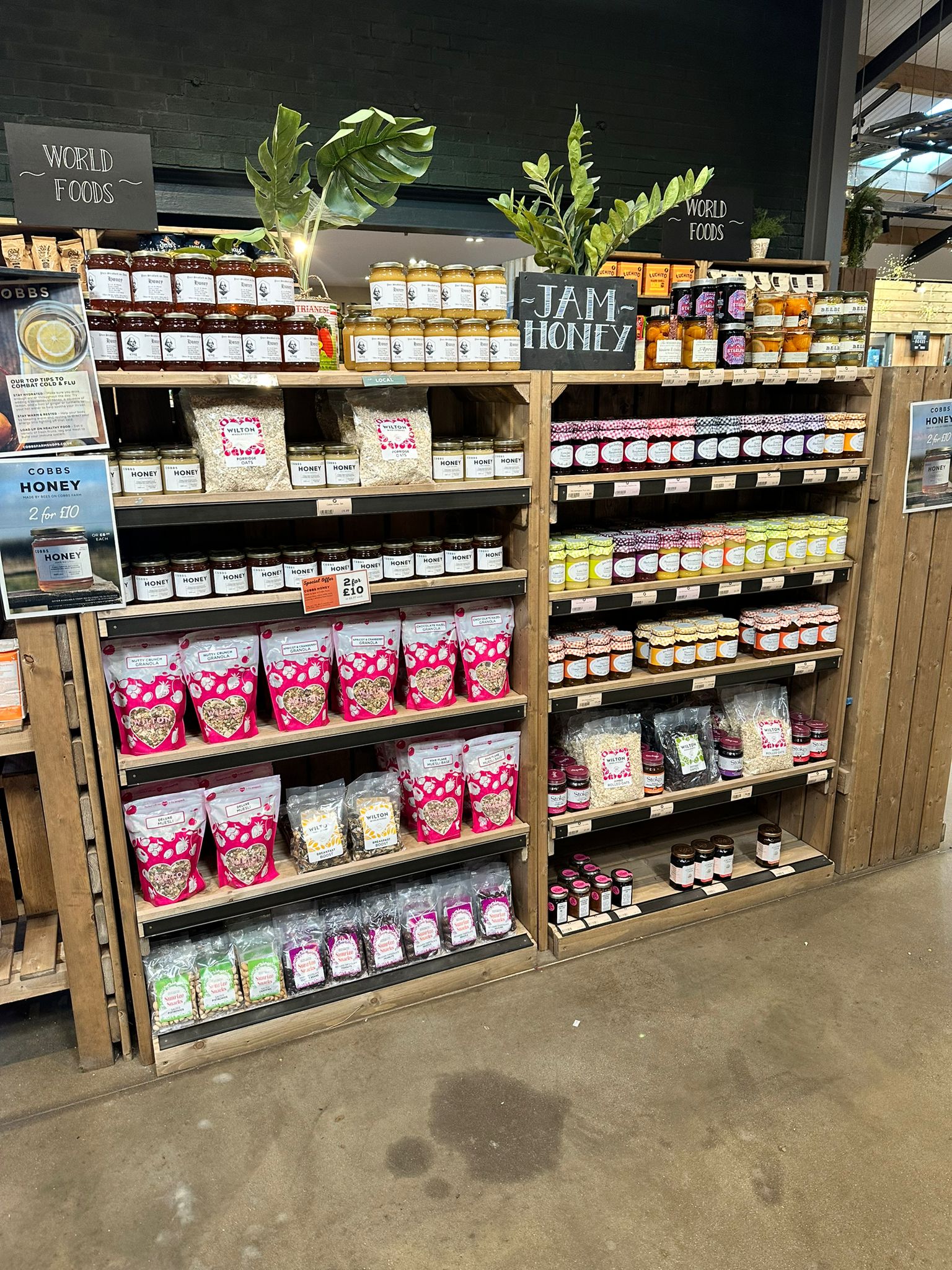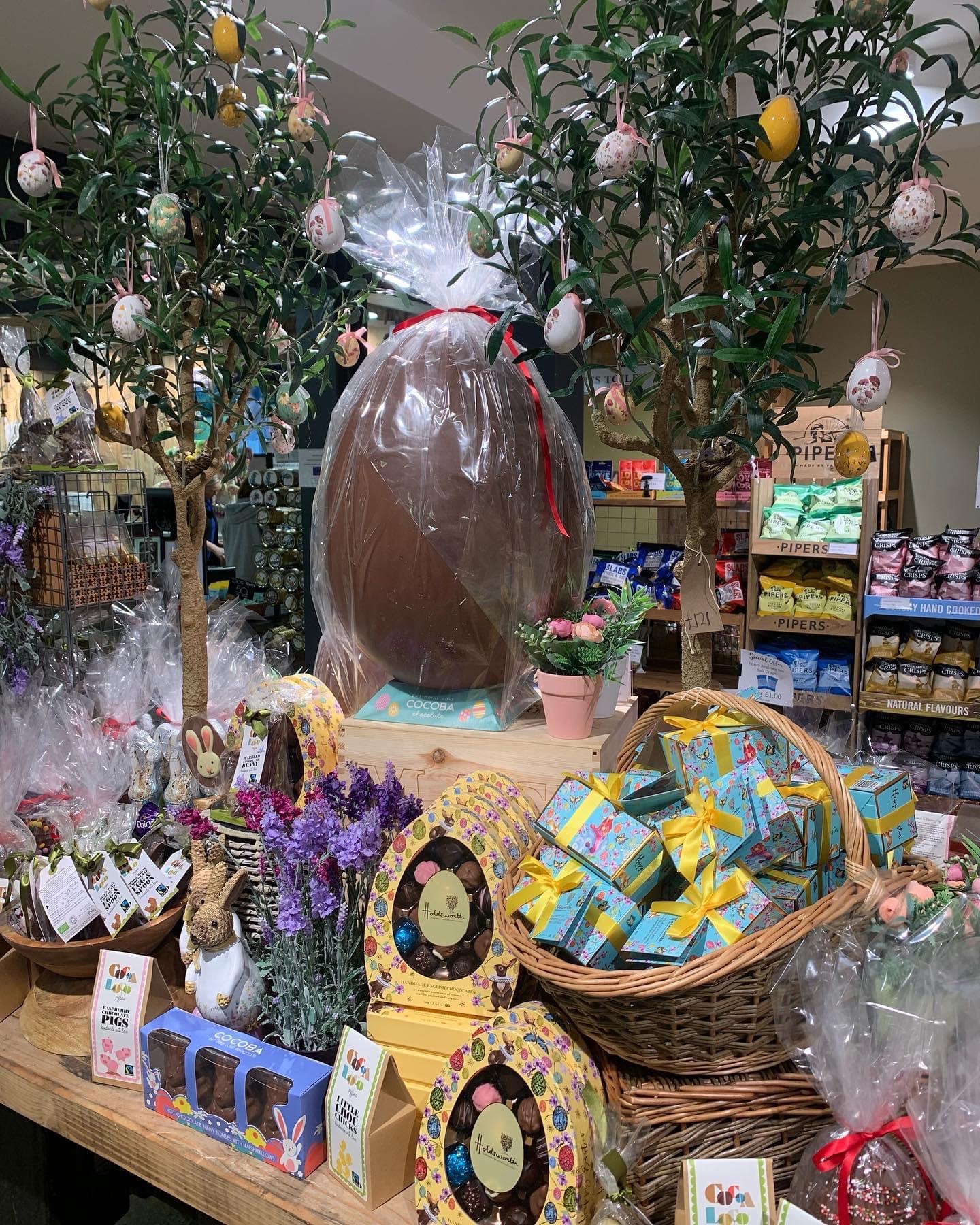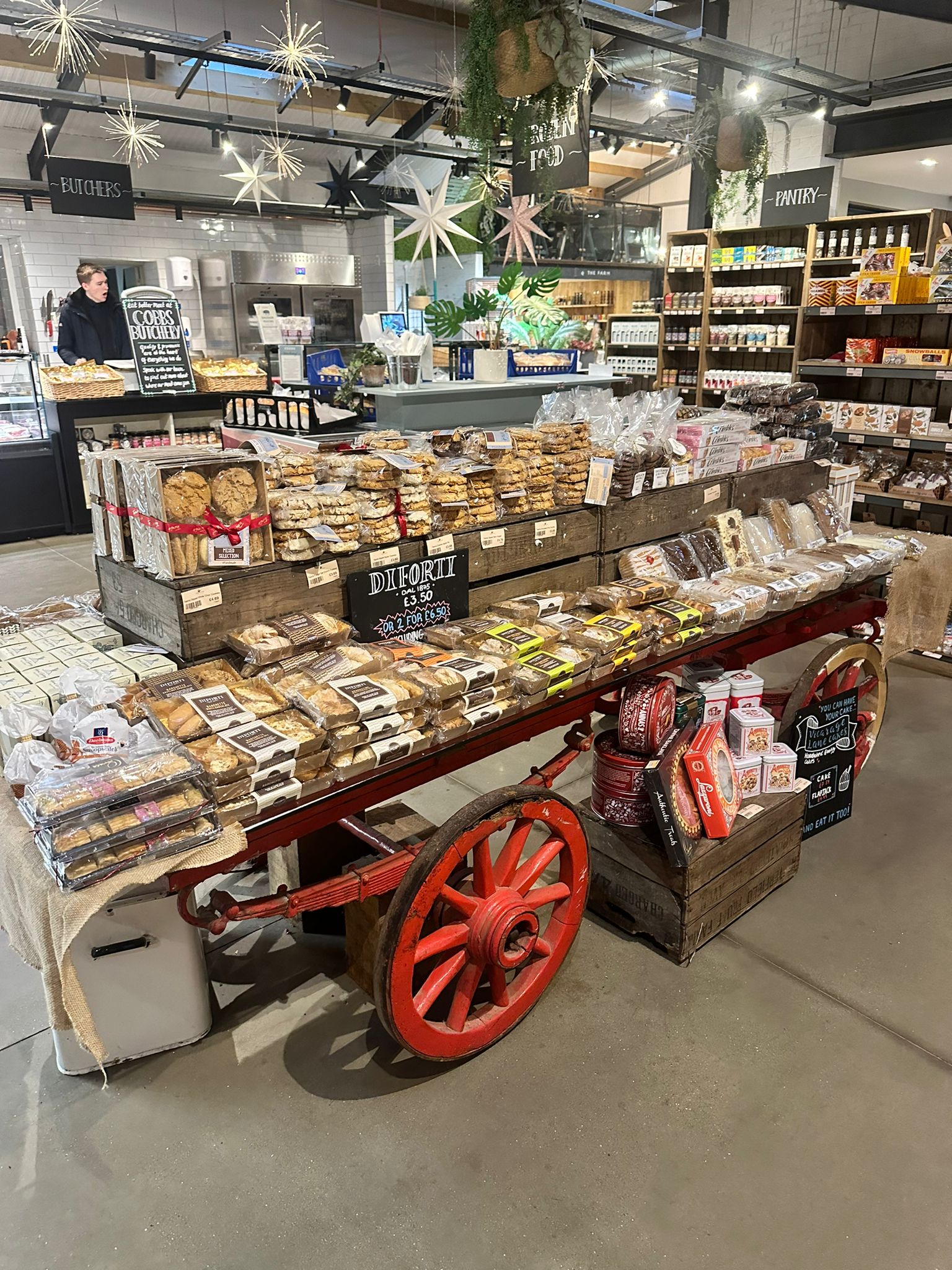Free digital copy
Get Speciality Food magazine delivered to your inbox FREE
Get your free copy
In the world of fine food retailing, taste is king – but looks can be almost as important to build a thriving independent business. “Our displays are key to our sales,” says Maria Henshaw, owner of Mainsgill Farm Shop. “As soon as we display food or gift items differently, it can have an instant effect on the sales.”
Farm shops and food halls can be warrens of delightful exploration for customers – but without considered displays, a shop can quickly turn from inspiring to overwhelming. “With so much stock available to the customers in store, it is imperative that each stand is displayed as well as the next,” Maria continues.
When it is done well, merchandising can be a crucial component of an engaging shopping experience for customers. This is something that Cobbs Farm Shop, which has four locations as well as a new build site in the works, prides itself on. “It’s a vital part of the customer journey as we try and provide these points of interest that draw people in and, hopefully, lead to a purchase!” says Tom Newey, CEO.
What’s more, displays can help independent retailers to stand out from the crowd and even make a name for themselves in their local communities – and beyond, thanks to tools like social media. “Our Christmas displays have now developed a following,” Maria says. “Each year, customers from locally and further afield make a special trip out to see our extravagant festive displays. Each year is bigger than the previous.”
Keep these 10 key considerations in mind to create impressive displays in your own shop.
There are a number of design methods and psychological tricks that retailers can use to entice customers and create a more multisensory shopping experience that leads to more sales. “We tend to use symmetry and work from the centre outwards. Height is important too to draw the customer’s eye across to the display,” Maria says.
Keeping things fresh will ensure regular customers stay interested. “Displays have to be different each year and season,” says Maria. “Customers like to see something new and even more creative than the year before.” And don’t try to pull the wool over their eyes with a repeat from last year, she warns: “They remember!”

For Tom, one key word for merchandising is ‘abundance’. “Abundance is a simple way of ensuring the message is seen – in your face,” Tom says. Maria agrees that more is more. “If we’re displaying a food item, this is often better displayed in a bulk format – the bigger the better! Food does not sell in a minimalist format,” she says. However, in some areas of the shop, Maria has learned that less can be more. “If displaying a gift/homeware or clothing/accessories item, this is often displayed in a ‘less is more’ delicate manner,” she says.
Creativity should be welcomed in the display creation process, but be wary of putting form over function. While floor-to-ceiling shelves might make your shop look full to the brim of exciting food and drink products to try, Maria suggests that when it comes to vertical displays, stacking goods as high as possible doesn’t work, simply because they become inaccessible. “We try to stay away from placing goods high up, as many customers cannot reach them. We use big props to create the height needed,” she explains.

Keep in mind that good displays tell a story. You may be buzzing with ideas for an unconventional display, but if you go too far off the beaten path you may cause customers to lose the thread of the story your displays are telling. “Relevance allows the customer a chance to better relate to the message or story and, again, hopefully lead to a purchase!” Tom says.
Utilising seasonal displays throughout your space can help instil a habit of continually changing the general look and feel of your shop. “Many customers return maybe twice a year at most when they are travelling and are always amazed at how different the shop looks,” Maria says. “We also have a lot of customers who shop with us each week, and they soon pick up on new displays and they know that means new, exciting stock!”

In addition to seasonal merchandising, retailers can use local events of significance to create various themes throughout the year. These can be as simple as sunflower-themed displays in late summer, or sports-themed sections ahead of big sporting events, like the World Cup. “We like to make displays around themes like strawberry season, orange/citrus flavours, or lambs/farmyard animals to coincide with events that may be going on,” Maria says.
Be sure to create displays around themes that your customers will connect with. You can also target different generational groups or age ranges with your merchandising. “Certain displays need to attract the attention of certain customers,” Maria says. “For example, at Easter we often have a kiddy-themed Easter display, and a separate grown-up Easter display in a different area of the shop.”
If your shop has multiple floors or a large square footage, you might not be able to count on customers walking through every single aisle. Get creative with product combinations that will draw their attention to the variety of products you offer. “We try to merge both areas of food retail and gift/homewares retail together,” Maria says. “We often capitalise on sales of special days like Valentine’s, Halloween and Easter for both departments by merging them together. By merging departments together in busy areas of the farm shop, we can create a story for the customer, providing them with everything they could need for the season ahead.”

If you want to keep your displays looking fresh and exciting, create an environment in your team where creativity flourishes. “We encourage our teams to be as creative as they can,” Tom says. “Whilst they tend to work to an annual plan, the final set-up we will often leave to sites. We don’t always get it right, but we’d rather people gave it a go and got stuck into what is one of the more fun parts of the job.”
When it comes to creative displays, there are many routes your shop can take, from the big Christmas blowout to smaller seasonal changes. Above all, make it unique. One of the worst things an independent fine food retailer can do is fall into a predictable supermarket style. “We try to stay away from the typical supermarket or home shop styles with the shelving you expect, and with the stock in very boring lines on the shelves,” Maria says. Keep these tips in mind, and your shop will be looking better than ever in 2024.
If you aren’t using your window displays to lure customers in on a busy high street or make an impression from a rural location, you could be missing a trick.
For Ross Parrock of Mill Street Store & Deli, window displays only played a small part in the deli’s merchandising plans when it first opened. But the King’s coronation changed things and caused him to start maximising spaces to their full potential.

“We had been talking about how we could draw people into the shop and make them stop as they passed by, and we really wanted to do something for this occasion,” he explains. “Luckily, we found a fantastic local artist who specialised in window art and we never looked back. We change the windows periodically, catching each season – Easter, Christmas – and our customers look forward to seeing what will be next.”
By teaming up with local artist Juliet Townsend (@art_by_juliet_townsend), the shop’s displays now have a reach beyond the local area. “Our social media interaction on posts relating to our window displays is fantastic and gives us a great opportunity to drive people to the website,” Ross says.
For retailers who are considering implementing a window display, Ross says first to remember to stick to your brand identity. “If you are invested and have a clear vision of what your brand is, then the only thing stopping you is your imagination. We want our customers to have an experience from the website to the shop front to the deli counters.”
His second piece of advice? Think big – beyond individual products and even your range – to connect with customers. “We don’t advertise or sell anything directly through the displays but see them as an extension of our internal spaces. You can have a broader view on what to display, as we have had windows very heavily focussed on food, obviously as we are a deli, but also displays showing local landmarks and activities in the summer months.”